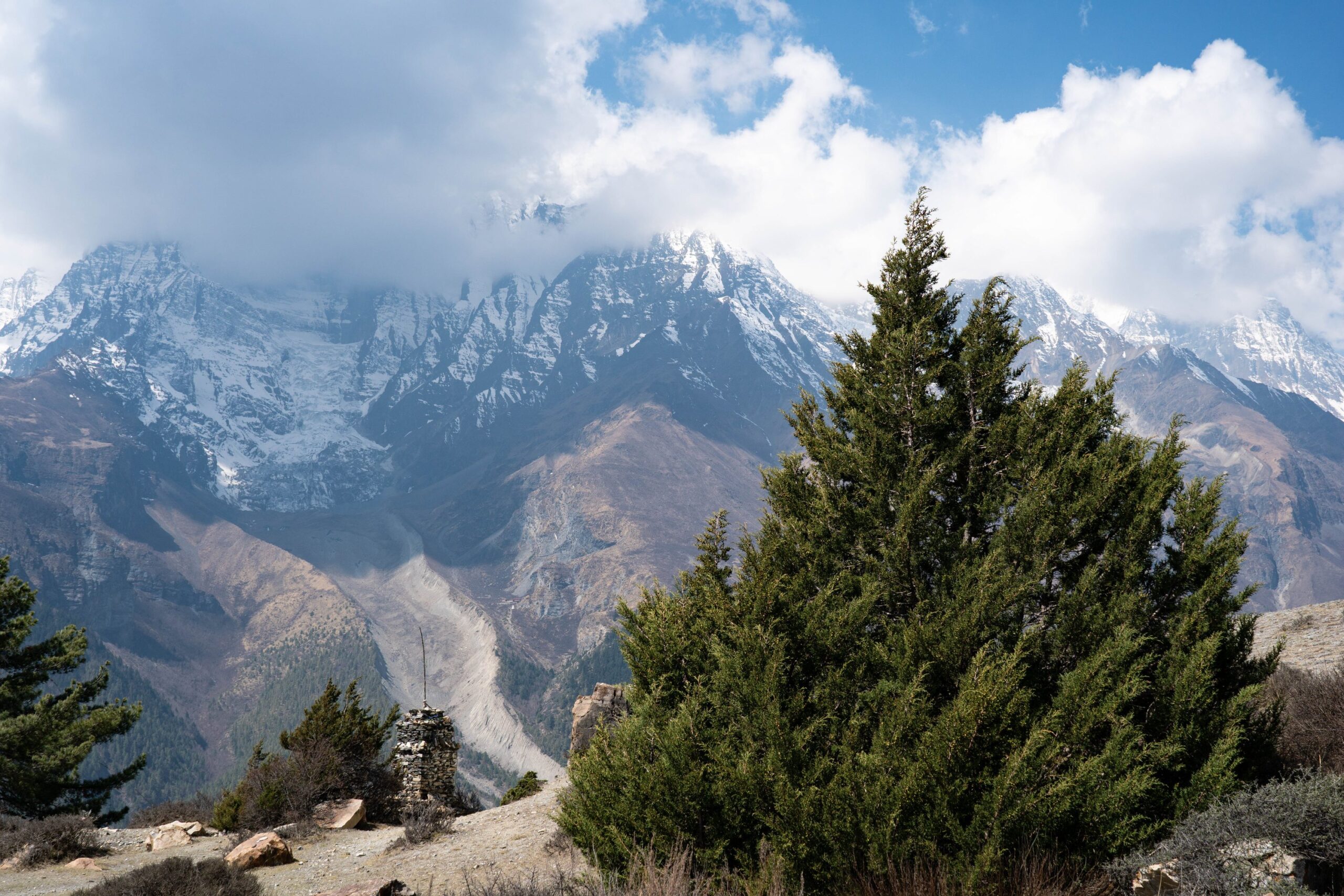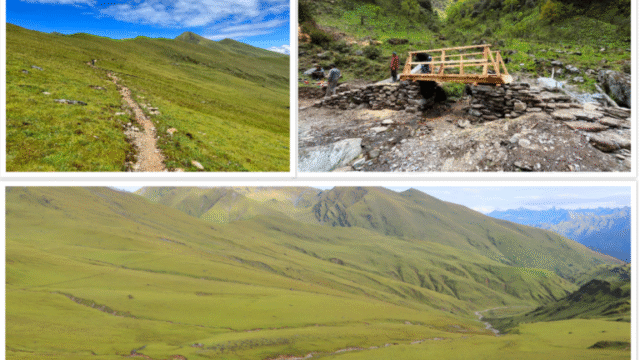In the early hours of a crisp Himalayan morning, as the first rays of sunlight begin to caress the towering Annapurna II, 72-year-old Ani Tashi Lama from the remote village of Bhraka sits in deep meditation. Despite the overnight snow adding to the village chill, she chants mantras, spins her prayer wheel, and lights a sacred incense known as “Sang” – a tradition deeply embedded in the spiritual and daily life of Manang’s people.
At 3,475 meters above sea level, in Manang Ngisyang Rural Municipality-5, Ani Tashi has been following this ritual since becoming a nun at age 25. Every morning, she lights Sang locally known as far or syukri a fragrant incense made from dried juniper leaves (dhupi) and other aromatic herbs like pallu, khamsang, and titepati.
In the Himalayan highlands of Manang and Mustang, lighting Sang is considered a sacred act that purifies the environment and spreads blessings of peace and prosperity. “Burning Sang makes our surroundings holy,” says Ani Tashi, reflecting the deeply rooted belief shared across the region.
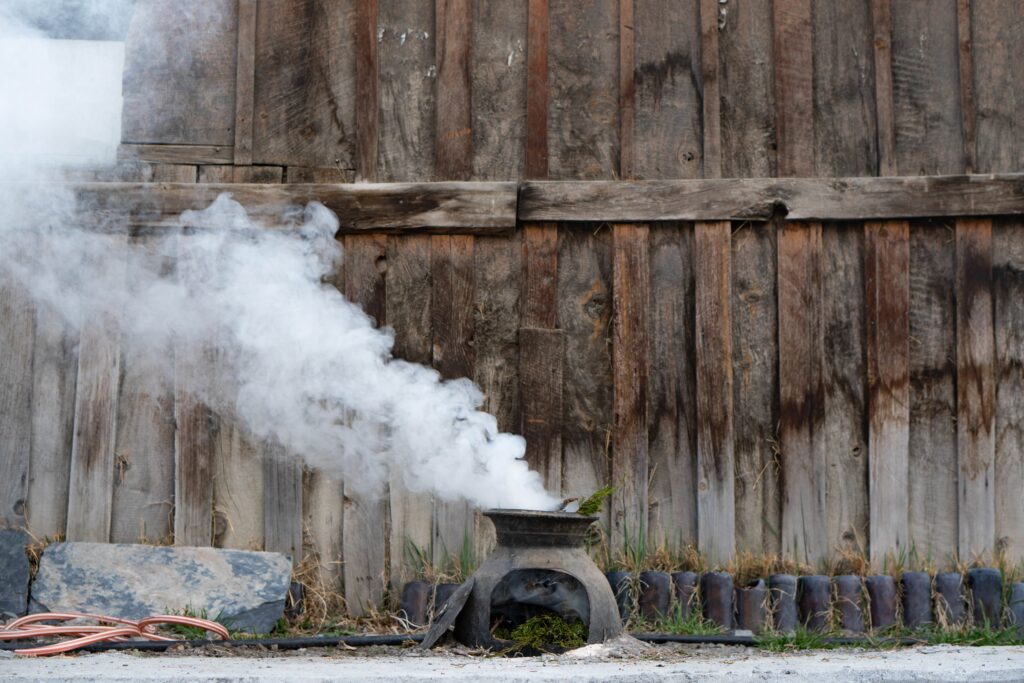
Ancient Tradition in a Sacred Land
Manang’s residents collect juniper leaves from designated forest areas far from the village. For Ani Tashi, the pilgrimage to the Sang-collecting zone in Tanke is a monthly spiritual journey. “We are not allowed to pluck juniper near the village. This practice has continued for generations,” she says.
Carefully regulated zones ensure sustainable harvesting. Locals like 82-year-old Jandhen Gurung recall the days when nearly all families in the village participated in Sang preparation. Today, even when traveling to Kathmandu, she takes Sang as a sacred gift. “Even in the city, I light Sang. It feels incomplete without it,” she says.
The revered 700-year-old Kagyu Monastery in Bhraka, facing Annapurna II, also upholds this tradition. Monastery caretaker Karma Chhiring Gurung, 48, lights Sang daily, believing it removes negativity and blesses the surroundings. “Every home around the monastery burns Sang,” he adds.

A Tradition Passed Down Through Generations
Sang burning is not only the domain of monks and elders. Karma Chhiring Ghale, 54, remembers learning the tradition from his grandparents. “We believe that lighting Sang before any auspicious work brings success and pleases the deities,” he shares.
The custom transcends religious practice and has become part of daily life even among professionals and entrepreneurs. “If I don’t light Dhupi in the morning, it feels like something is missing,” says 51-year-old tourism entrepreneur Ongma Gurung.
Even those who migrated to Manang from other regions have adopted the practice. Keshmaya Tamang, who moved from Gorkha 20 years ago, frequently visits the hills around Bhraka to collect Sang materials and shares them with her neighbors. “Burning Sang has become part of my life too,” she says.
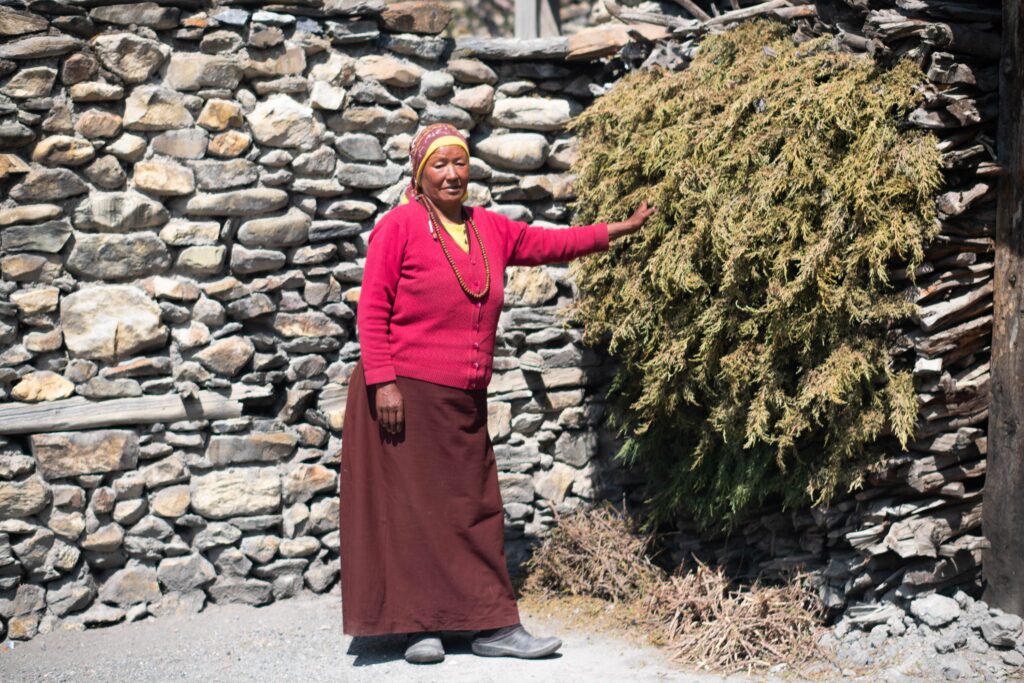
Managing Demand and Protecting Heritage
However, the increasing popularity of Sang has raised concerns about overharvesting and illegal trade. According to the Annapurna Conservation Area Project (ACAP), permission is required to carry juniper leaves out of Manang. Under the 2053 B.S. Conservation Area Management Regulation, each person is allowed to carry up to 10 kg of juniper leaves annually.
“This area is part of the Annapurna Conservation Area, so juniper collection for commercial purposes is prohibited,” says ACAP Chief Rabi Kadel. “Initially, the limit was just 3 kg, but community needs led us to increase it to 10 kg in 2079 B.S.”
In the fiscal year 2080/81 alone, 5,000 kg of juniper leaves were officially taken out of Manang. This was up from 1,593 kg in 2079/80 and 1,488 kg in 2078/79. ACAP introduced a permit system in 2066 B.S. to ensure sustainable use of this sacred resource.
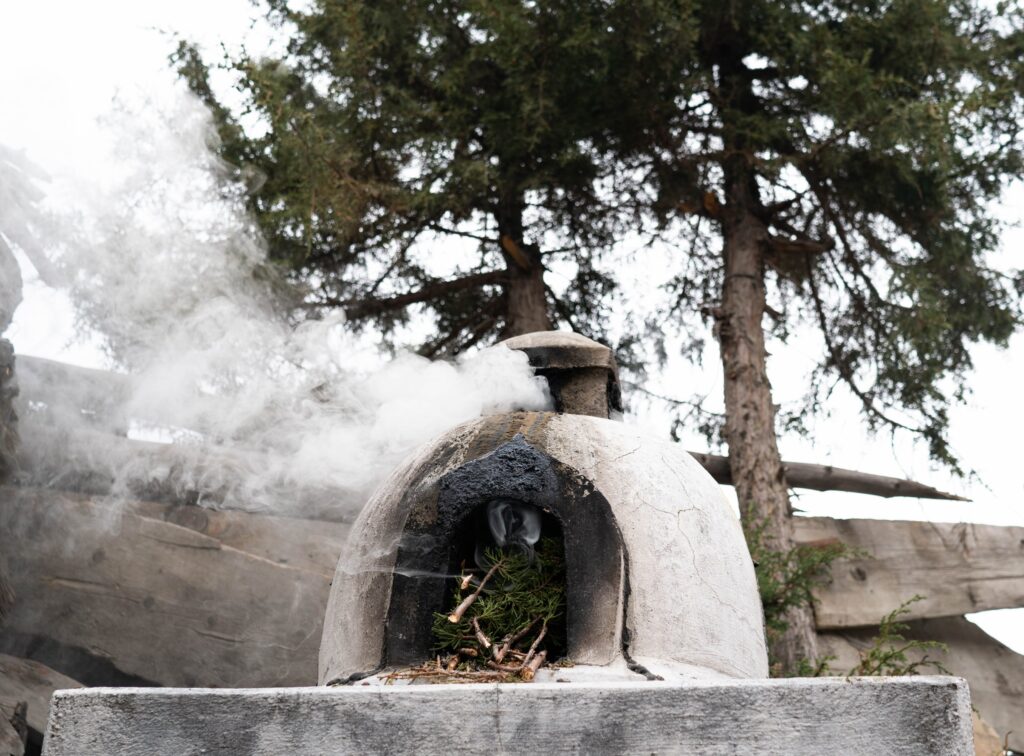
Legal and Cultural Challenges
The need to balance spiritual traditions with environmental conservation is evident. Former Ward Chair of Manang-5, Karma Gurung, was once detained for allegedly carrying more than the allowed limit of juniper leaves. “The old rule allowed only 3 kg. I pushed for the increase to 10 kg because our community needs it,” he explains.
With many Manang residents moving to urban areas or abroad, practices like Sang burning are also carried with them. It is not just a ritual, it is a link to their roots. From Kathmandu to foreign cities, juniper-scented smoke continues to rise, connecting the diaspora to their Himalayan heritage.
As younger generations uphold this tradition, and with regulatory frameworks now in place, Manang’s fragrant flame of faith is set to endure. Sang is not just smoke rising from the hearths of Himalayan homes, it is the essence of a culture that finds divinity in nature, and serenity in scent.
